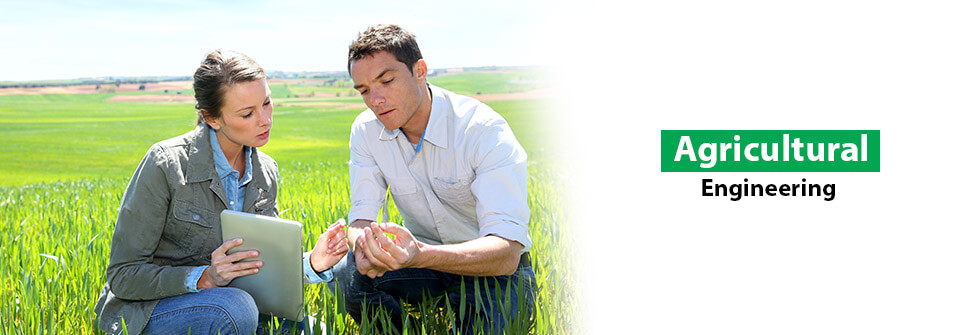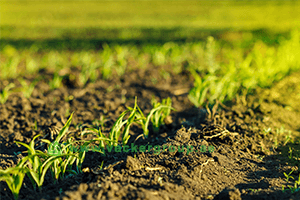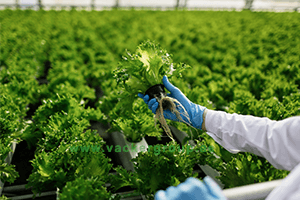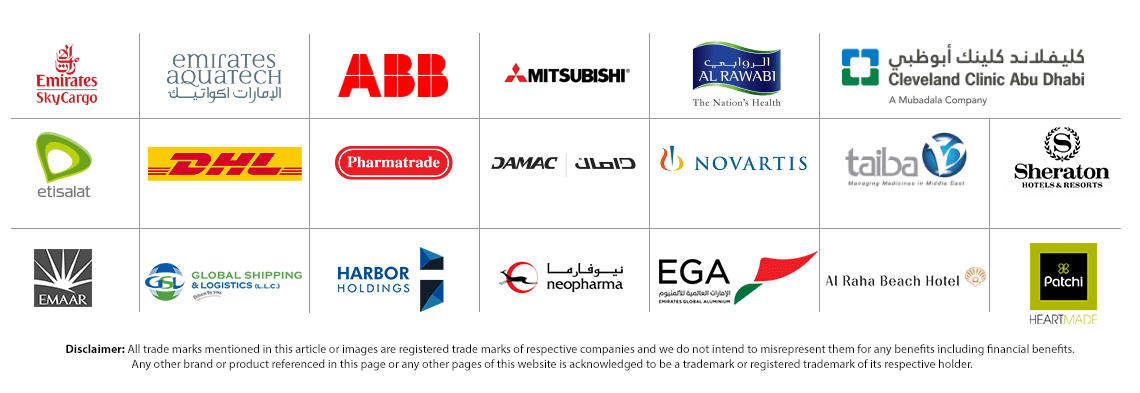 The 21st century is a challenging one for agriculture and agriculture industries. Aided by better and more accessible healthcare facilities, world population has surged to 2.5 billion in 1950 to 7.5 billion in 2017 as per UN estimates. It is projected to grow to nearly 10 billion by 2050. Feeding so many mouths is a terrifying prospect even before one considers the fact that currently, the world is able to meet only 70 per cent of its demand for food leaving many undernourished or facing starvation.
The 21st century is a challenging one for agriculture and agriculture industries. Aided by better and more accessible healthcare facilities, world population has surged to 2.5 billion in 1950 to 7.5 billion in 2017 as per UN estimates. It is projected to grow to nearly 10 billion by 2050. Feeding so many mouths is a terrifying prospect even before one considers the fact that currently, the world is able to meet only 70 per cent of its demand for food leaving many undernourished or facing starvation.
Technology in Agriculture
Latest technologies including sensors, artificial intelligence and big data analytics are used in agriculture to improve efficiency and reduce utilisation of resources. The farming industry is the most conventional industry and incorporating technology comes with a wide variety of challenges.
-
Need for Ag-tech
The next big challenge that agriculture faces in the 21st century comes from rapid urbanization. In 2008, for the first time in world history, the number of urban dwellers exceeded the number of rural dwellers and the trend looks likely to continue for the foreseeable future with 60 per cent of the world population expected to be urban dwellers by 2025. This has led to a sharp decrease in area under cultivation as well as the percentage of the labour force engaged in agricultural activities. While this problem has been offset to a large degree by increased productivity per hectare and per worker with the aid of agriculture technology (or ag-tech) and adoption of efficient farming practices, the continuing trend of urbanization has greatly increased the pressure on agricultural engineers to come up with new innovative ag tech solutions.
However, by far the greatest threat to agriculture and by extension, to food security in the 21st century is that of climate change. As climate and climate pattern shifts, traditional farming practices are becoming rapidly obsolete in meeting the demands of agriculture. Untimely rain and insufficient rain are becoming commonplace around the world destroying crops and decreasing productivity. Droughts have become a part of life for many regions and while the modern trade networks have helped prevent starvation to a large extent, Agflation or Inflation driven by high costs of agricultural products have become a great headache for many countries.
Finally, not all of the challenges that agriculture face is supply driven. Some such as the increased demand for an exotic/non-native agricultural product by the growing urban middle class is demand driven. Globalization along with with the rapidly growing health and wellness industries have altered dietary patterns that have withstood centuries of change and driven up demand for exotic food and food products. This has, in turn, created pressure on farmers to modify crops and crop patterns to compete with imported goods for this lucrative market. In turn, this has increased demand for innovative ag-tech solutions which can enable local farmers to grow these exotic food products within the region.
The only solution to all these problems is to produce innovative solutions which can dramatically increase productivity (both per hectare and per worker) and design ways to control environment so that crops can be allowed to grow in exotic regions as well as be protected from the travails of climate change.
-
Opportunities in ag-tech
 Despite the many and varied challenges faced by modern agriculture, the picture is far from bleak for modern agriculturalists. In fact, Agriculture is increasingly becoming a very lucrative market.
Despite the many and varied challenges faced by modern agriculture, the picture is far from bleak for modern agriculturalists. In fact, Agriculture is increasingly becoming a very lucrative market.The main reason for the growing focus on agriculture industries has been dealt with already. The world currently produces only around 70 per cent of its requirement meaning a supply gap which could easily be filled by new ventures by aspiring agriculturalist. Furthermore, currently, the whole agriculture industry is vexed by rampant market inefficiencies ranging from wastage, to over employment to low productivity. This provides entrepreneurs, aided by ag-tech solutions, to easily penetrate lucrative markets around the world rather easily and return profits.

Yet another positive for aspiring entrepreneurs is the high demand for varied agricultural products especially those driven by the health and wellness sector. Often these products are exotic and have to be imported from far away regions of the world incurring significant shipping and tariff costs. Ag-tech solutions provide farmers with an opportunity to subvert these costs by enabling them to grow these exotic products locally and take advantage of a market that would be otherwise inaccessible to them. Controlled Environment Agriculture (CEA) is one such technique where crops are grown within an enclosed growing structure and variables such as temperature, humidity, light, nutrients, and carbon dioxide are controlled to maintain optimal growing conditions for even the most demanding of products.Ag-tech solutions also drive urban farming ventures which strive to produce products right where the demand exists so as to eliminate middlemen and maximize profits. Vertical farming, the practice of producing food products such as vegetables in vertically stacked layers, can dramatically reduce land usage enabling them to produce large quantities of products in urban areas where space is often at a premium. Similarly, ag-tech solutions such as drip irrigation can dramatically reduce usage to water, enabling farms to function efficiently in an environmentally friendly manner. In fact, technology such as hydroponics even enables farmers to grow food products without soil by instead using mineral nutrient solutions in a water solvent to deliver those nutrients essential for the growth of plants.
Which brings us to aquaponics, yet another ag-tech solution which is growing rapidly in popularity. Aquaponics. Aquaponics refers to a system where water from a traditional aquaculture system (a practice were by fishes, molluscs and other aquatic creatures are farmed) is fed into a hydroponic system where nitrifying bacteria breaks down the byproduct initially into nitrites and further into nitrates, which are utilized by the plants as nutrients. Once the nutrients are consumed, the water is then recirculated back to the aquaculture system. The process dramatically reduces wastage of water and creates a symbiotic relationship, in which both the plants and aquatic creatures thrive. More importantly for an agriculturalist though, the system of Aquaponics is both highly efficient and productive assuring significant profits by minimizing costs.
And it does not stop there. Agricultural Engineering strives to provide new solutions which empower farmers to produce ever greater amounts once again making agriculture a very lucrative opportunity.
-
Agricultural Engineering

Agricultural engineering is a complex field and deals with a huge variety of functions all critical for creating an efficient, productive and reliable farm that empowers the farmer to make the most of all the available resources. Some of the most important among them are:
-
Designing agricultural machinery and agricultural structures
Modern agriculture is almost synonymous with machines that accentuate the farmers’ abilities. They also help replace labour which has been lost due to rapid urbanization witnessed around the world over the last six decades. Agriculture machinery is designed to help with almost all functions associated with farming right from tilling to harvesting.
The importance of agricultural machinery is perhaps best described using the example of the combine harvester. The combine harvester three separate functions which together form the process of harvesting namely reaping, threshing and winnowing into a single process. All three of these processes are, if implemented without the harvester, highly labour intensive and as such using a combine harvester dramatically reduces the amount of labour required to complete the process of harvesting.
Some of the other common agricultural machinery include tillers, seeding machines, milking machines and even tree shakers which can drastically reduce both the time and labour spent on agricultural activities.
Agricultural structures meanwhile are structures designed for agricultural practices which include storage for grains and other food products, equipment, animal supplies or feed. Having good storage facilities can be vital for farmers as those without any are easily bullied into selling at prices below the market rate before the produce spoil.
Increasingly cold storages are gaining popularity as they form the first stage of a well-run cold supply chain. Cold storages use refrigeration technologies to store produce at low temperatures. This sends all the bacteria into a dormant state / reduces their activity and dramatically increases the life of the produce, hence decreasing wastage and increasing efficiency. A well run cold chain may even allow farmers to tap lucrative markets far away from the source of production.
-
Agricultural resource management
Agricultural resource management is perhaps the single most important factor in building modern farms and farming systems. Rapid urbanization has grown the urban population in such an exponential manner that, in developed countries, countrysides are becoming a rare and many small towns are being abandoned. Jobs too are shifting, with job opportunities in Industrial and service sectors far exceeding those generated by the agricultural sector, exacerbating the migration towards urban, industrialized centres. This, in turn, has increased the responsibility on the farming communities tasked with feeding these urban centres with the ratio of food producers to consumers decreasing constantly. This has made running the farm more efficiently an imperative. The most important factor in running any farm in an efficient manner is the management of resources such as land, labour, power, and water.
Starting with the land, as the land under the till, so as to say, decreases, there has been a greater drive to get most out per hectare of land. Land, overused or misused, for example, can have a negative impact on productivity and disturb the natural equilibrium. Hence it is not unusual to leave a piece of land fallow as it regains nutrients it lost. Agricultural engineers and ag-tech solutions can find a way around this problem by analyzing the nutrient contents in the soil and recommending crops which will not further deplete the nutrient content but still allow farmers to produce. This method is known as a crop—rotation. Furthermore, techniques such as vertical farming allow farmers to cultivate more per hectare and in the process dramatically increase yield per hectare. Vertical farming and associated technologies are expected to be vital for the future as farms themselves shift to urban areas where land will be at a premium.

Next resource to be dealt with is labour. As the number of people engaged in agricultural activities decrease, increasing per worker yield has become imperative. As dealt with in the section above, much of this can be achieved by the adoption of agricultural machinery which can augment or replace labour to ensure that production levels do not fall. In fact, in many cases, using modern agricultural machinery tends to increase production levels as wastage levels decrease.However, this reliance on agricultural machinery has created a new problem. In Modern agriculture access to cheap electricity and fuel has become vital. Most agricultural machineries run on diesel while electricity is important to the functioning of cold storages, grinders, irrigation system etc. Agricultural Engineering offers two solid solutions to these problems. Firstly, for electricity, a mixture of alternative sources of energy such as solar energy and wind power is integrated into rooms and mills to provide at the very least a percentage of electricity required to run the farm. Secondly, biowaste, available in large quantities within any farm, is converted into biofuel and used as diesel replacements in agricultural machinery. Together, they can effectively bring down energy dependency and reduce costs while at the same time reducing waste.
Finally to the greatest challenge to modern farms is water management. Freshwater has become a costly commodity of late, driving up costs. Furthermore, if the trends continue and urban farming becomes mainstream as expected, farms will be even harder pushed to meet its demand for water. As such, water management has become of paramount importance to modern farms. Thankfully there are several well designed Ag- tech solutions to these problems. Some such as well-designed irrigation systems have been in existence for decades. A sprinkler irrigation system is a norm as of today. They are programmed to provide water to crops periodically with minimum waste. However, these irrigation systems are fast being replaced by a new, even miserly irrigation system known as a drip irrigation system. Drip irrigation systems use a network of valves, pipes, tubing, and emitters to allow water and fertilizer to drip slowly onto the root zones of different plants saving fertilizer and water in the process. Technologies like hydroponics take this even further, by allowing water to be used reused while forming symbiotic relationships with aquaculture so that water wastage is minimized.
Whatever the means and whatever the end the greatest scope of ag-tech solutions are in the field of resource management. As more and more farmers adopt these new technologies and practices one can be sure that the farms of the future will be greener, more productive, cost-effective and yes, more profitable than ever.
-
Waste management
As mentioned before, farms and food industry, in general, are plagued by wastage. This affects the sustainability of farms. The percentage of produce wasted can have a significant economic impact. Waste management entails three parts. First, all systems and processes are standardized and monitored continuously to prevent and minimize wastage. Secondly, by-products and wastes are sorted for reuse. This is of particular importance to farms as a large percentage of the waste produced by farms are of organic in nature. This means they can be biologically reprocessed through composting or other such means to be used as mulch for agricultural purposes. In addition waste gases produced during the process of composting such as can be captured and used for generating electricity and heat by a process known as cogeneration which can efficiently convert waste to energy. Some animal and plant by-products can even be converted into biofuel which can serve as an alternative fuel to fuel hungry agricultural machinery. The final part of waste management entails treatment of any remaining waste so that they can be safely disposed of without affecting the environment, especially the land and water resources which are crucial for the maintenance of agriculture.
Effective waste management goes a long way in ensuring that farms remain sustainable and efficient by plugging leakages and boosting productivity.
-
Miscellaneous
While the greatest scope for ag-tech solutions is in designing innovative agricultural machinery/structures and resource management, agricultural engineers do much more. Surveying and Land profiling, erosion control and soil management, climatology and atmospheric science, food engineering etc. all of which can find significant uses in modern farm and help create a more efficient, productive and sustainable farms.
-
-
Conclusion

Around the world, ag-techs are allowing farms to modernize and meet the ever growing demands of the growing urban class. With undernourishment and starvation still rampant, ag-tech could quite possibly be the solution to bridge the widening supply gap. Ag-tech employs a huge variety of means to provide solutions to every problem that vexes the modern farmer.
Whatever the means and whatever the end the scope for ag-tech solutions are increasing consistently. As more and more farmers adopt these new technologies and practices one can be sure that the farms of the future will be greener, more productive, cost-effective and yes, more profitable than ever.
In the Middle East, we serve the United Arab Emirates, Kingdom of Saudi Arabia, Oman, Qatar, Bahrain, Iraq, Lebanon, Egypt, Jordan, Libya, Tunisia etc.
In Africa, we serve countries including Kenya, Algeria, Tanzania, Djibouti, Chad, Ghana, Rwanda, Uganda, Nigeria, Ethiopia, Morocco, Angola, South Africa etc.
Also, we supply to India, Bangladesh, Pakistan, Afghanistan, Kazakhstan, Srilanka, Maldives and Cyprus.




